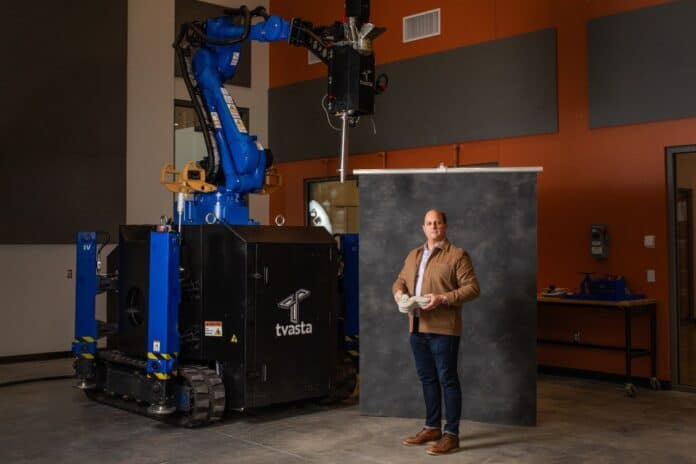As the national median home price soared to $459,826, pricing out three-quarters of U.S. households, a Virginia Tech expert told Congress that innovation in construction could be key to ending the housing affordability crisis.
Andrew McCoy, the Yvan J. Beliveau Professor in the Myers-Lawson School of Construction and director of the Virginia Center for Housing Research, testified on May 14 before the U.S. House Committee on Financial Services’ Subcommittee on Housing and Insurance, telling lawmakers that technologies such as 3D printing, augmented reality, robotics, and artificial intelligence could be pivotal to increasing housing supply and reducing costs.
“Construction technology is especially compelling right now because it doesn’t replace human workers, it amplifies them,” McCoy said. “It is time to harness these tools for progress in the housing industry.”
Virginia Tech is already stepping up to answer this call, with researchers driving innovation around cutting-edge building technologies and equipping the future workforce to harness them.
Modernizing the construction industry though policy and technology
Anyone who’s attempted to buy a home in the past few years knows just how tight the market has become. The affordability crisis has been a disaster in slow motion, said McCoy, with roots in the 2008 financial downturn. That led to reduced productivity for the construction industry, labor shortages, supply chain disruptions from the pandemic, inflation, and rising financing costs.
A perfect storm of challenges led to more than a decade of underproduction of new housing. According to some estimates, Americans need an additional 3.4 to 6.4 million homes every year — they just aren’t being built.
The building industry desperately needs to adopt new technologies that can accelerate the rate of new construction and improve affordability. Tools such as 3D concrete printing, robotics, on-site automation tools, prefabricated construction, digital project management, and artificial intelligence could dramatically impact the nation’s housing crisis. But as McCoy told lawmakers, federal policy support is required to overcome systemic barriers to innovation.
“Our policy dilemma is that the nation is not reaping economic and social returns from innovation when the industry is not innovating as much as possible,” said McCoy, who’s been tapped as a housing policy advisor for several gubernatorial campaigns in Virginia. “We tend to think of housing as an economic indicator, while we need to see housing innovation as an economic driver.”
A housing affordability solution for Virginia
In Virginia, state agencies and local governments are already reducing barriers to innovation through zoning and regulatory reforms and new funding options that incentivize the adoption of new housing technologies.
For instance, a Community Innovation Grant from the Virginia Housing Development Authority helped McCoy’s research team at Virginia Tech, along with industry partners, use 3D concrete printing to build four affordable housing units in the Williamsburg and Richmond areas.
Concrete printing quickly produces parts of a home, saving money for home buyers by reducing materials and lag time. Ten more 3D-printed homes are in the works with potential for hundreds more.
As associate director for research and innovation in the Myers-Lawson School of Construction, McCoy believes that Virginia Tech research could have an immediate impact on housing affordability in the commonwealth and beyond, if lawmakers make it easier for builders to integrate technological changes.
“We’re beginning to see how targeted policy and funding can de-risk innovation for builders,” McCoy said. “But we need much more if we’re going to close the housing gap.”
A national challenge with workforce-centered solutions
For McCoy, the new technologies aren’t eliminating jobs — they’re reshaping them in an industry poised for change.
“For example, a framer using layout tools with augmented reality can complete work faster with fewer errors. Electricians can see into walls and equipment. Factory-built wall systems still depend on crews for assembly, finishing, and adaptation to site conditions.”
And Virginia Tech is preparing the commonwealth’s future workforce by training its students on cutting-edge technologies in building construction, even as its research faculty pioneers high-tech techniques. The university’s Coalition for Smart Construction is spearheading efforts to push the boundaries of engineering with the help of industry and government partners, even as it waits on completion of a special construction project: a 40,000-square-foot lab and testing facility in HITT Contracting’s new Falls Church headquarters.
Mobilizing the traditionally risk-averse home building industry to implement large-scale changes won’t be easy, which is why McCoy advocated on Capitol Hill for federal policy and financial support for construction technology. “The goal isn’t to automate people out of housing,” McCoy told legislators, “but to build a better industry around them.”


